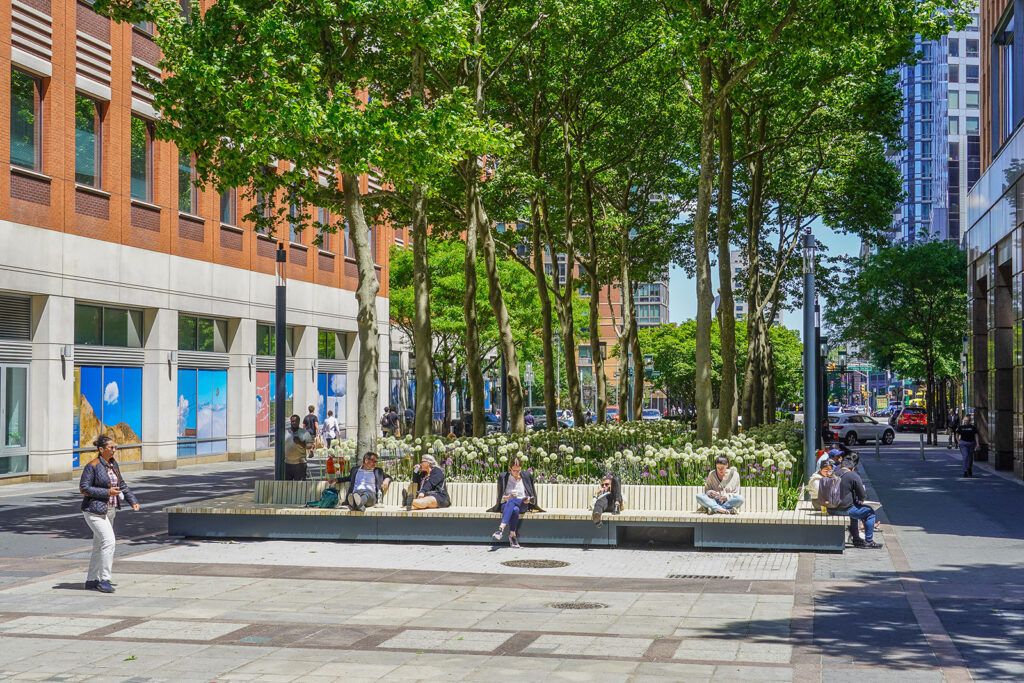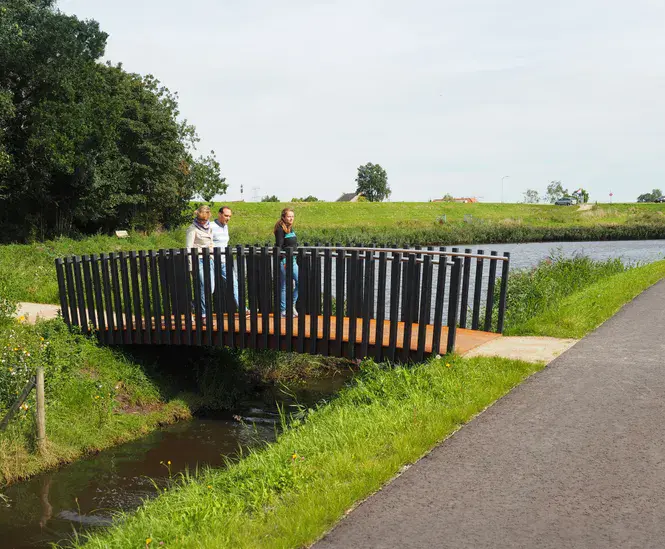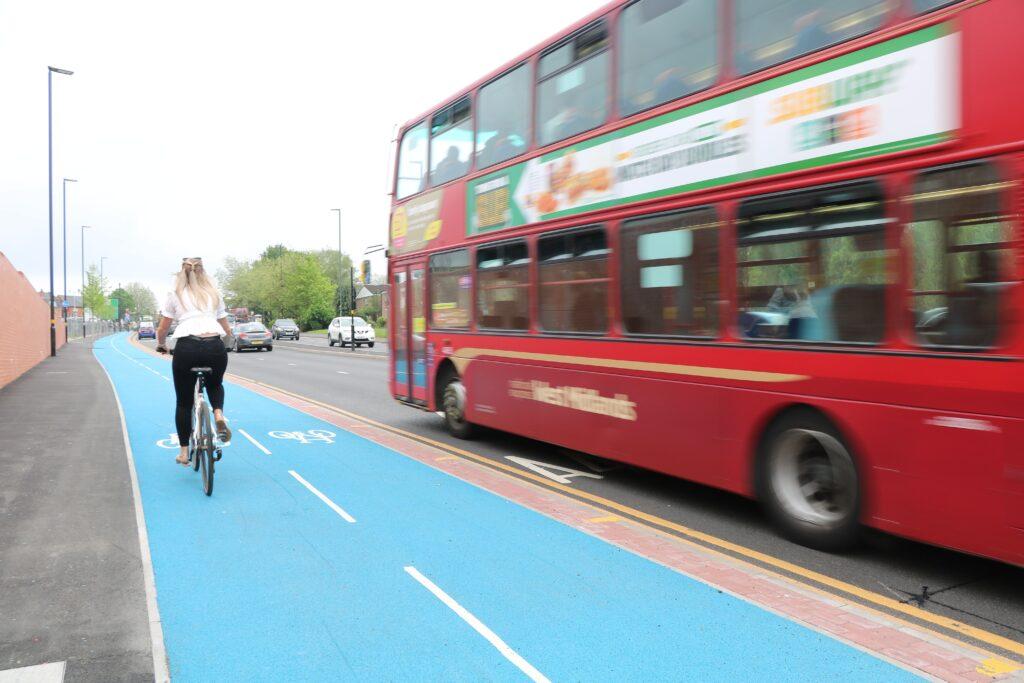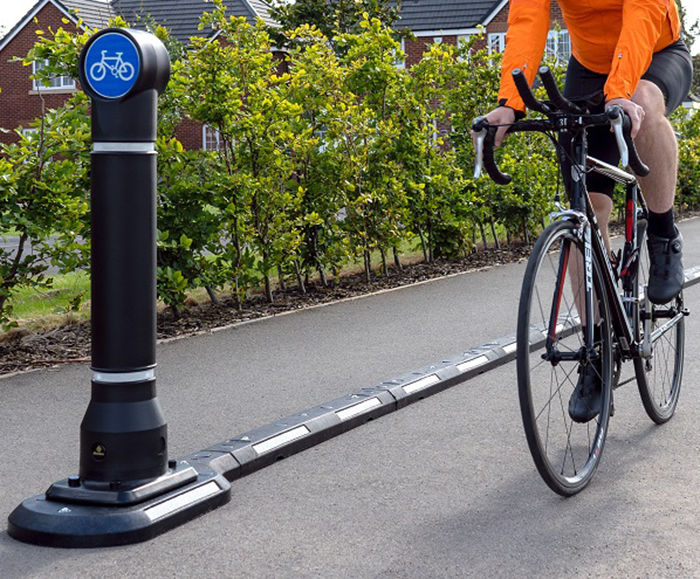Sedentary lifestyles are on the rise and with them conditions like diabetes and heart disease. At the same time, our cities are full of noise and air pollution – it feels like we’re spending more and more time stuck in traffic.
Active transport can provide an accessible and effective solution.
What is active transport?
Active transport is any kind of transport that is people-powered, including cycling, walking and wheeling. It can promote healthy lifestyles and reduce pollution by lowering the number of cars on the road. It has also been shown to increase productivity, improve energy levels, and enhance the appeal of urban spaces.
The evidence for why we should encourage active transport is undeniable, but the question remains: how do we encourage it? And how can we design and develop spaces to help make populations more active?
To tackle this, first we need to understand why people are more inclined to drive instead of walk or cycle. Existing infrastructure for active transport is often limited or poorly implemented, making driving is the easiest and safest option.
We need to design public spaces with pedestrians and cyclists in mind
Bike lanes and cycle paths should form a network that allows people to move through a city safely and easily. When cyclists and walkers are able to avoid transport arteries, they are exposed to fewer pollutants and dangerous vehicles. These cycle and walking routes should connect with things like transport hubs for onward travel, green spaces for access to nature and socialisation.
The benefits of dedicated active transport routes
Pedestrian and cycle routes can help tackle health inequalities. Data shows that creating these routes leads to an increase in active transport in deprived areas, and among people with disabilities.
Routes for walking and wheeling should incorporate greenery. Research shows that pedestrians using green corridors are exposed to to 65% fewer nano particles than those on main roads. Plants along green corridors remove air pollutants and reduce noise levels, improving mental and physical health of a cities population.
Green corridors should be lit at night for the safety of pedestrians and cyclists. However, over lighting and light spill should be avoided to to protect nature. This can be achieved through dimming, use of warm colour temperatures and smart lighting strategies. For more information, we recently published a guide to outdoor lighting.
Pedestrianised streets can encourage walking and cycling
Pedestrianising streets reduces the stress of interactions with motor vehicles. By closing off streets to cars with bollards and barriers, pedestrians and cyclists can move freely and safely. This is particularly important for less confident cyclists, who might avoid cycling due to safety concerns.
Pedestrianised zones can also transform streets into areas for social interaction. Street furniture and plant life help foster a sense of place and connectivity. Additionally amenities like water fountains and seating areas provide opportunities to rest, recharge, and break up longer journeys. These features can make it easier for people of all ages and abilities to access active transport.
A great example of this is New Road in Brighton, where benches were installed along a newly pedestrianised street. By turning the street into a social space, traffic dropped by 93%, with a 600% increase in the number of people spending time on New Road.

Make cycle routes safe
When cyclists use roads, careful consideration must ensure their routes are safe. Traffic lights and advanced stop lines give cyclists priority, allowing them to filter to the front of traffic queues and avoid potential collisions by increasing visibility.
Studies show that separating bike lanes from roads with curbs and bollards reduces the risk of collisions by 28%.
While traffic calming measures like speed bumps can make areas safer for everyone.
Effective use of signage and road markings enhances navigation as well as safety. Markings can delineate spaces for different road users, reducing conflict between motorists, cyclists, and pedestrians. And clear way finding and route identification helps to guide cyclists through cities along safe and direct routes.
Bridges and underpasses can keep walkers and cyclists away from motorised traffic, reducing travel times, and streamlining journeys by avoiding high-speed roads.

Invest in secure bike parking infrastructure
We also need to increase investment in secure bike parking infrastructure.
With bicycle theft on the rise, cyclists are all too familiar with the stomach-wrenching feeling of returning to find their bike stolen. In London 20,000 bikes are reported stolen every year.
To encourage more cycling, things like bicycle lockers and closely monitored bike stands are fundamental to reducing theft.
Promoting safe bicycle parking in city centres can also drive economic benefits, encouraging active commuters to spend more time in commercial areas.
Provide well-designed surfaces for cyclists and pedestrians

When designing cycling and pedestrian routes around roads its important to make them visible.
Coloured surfacing can demarcate these routes, reducing the risk of accidents while boosting confidence. The use of porous paving and non-slip surfaces, can prevent falls while contributing to sustainable water management schemes.
Tactile paving can also be incorporated to make walking and cycling more inclusive. It demarcates hazards while aiding the visually impaired, making pedestrianised routes accessible to everyone.
Conclusion
By designing our cities and transport pathways in ways that can promote movement we take a large step towards improving the health and interconnectedness of society. As a result we can create environments that support a healthy population, reduce pollution, increase economic productivity as well as foster an often neglected sense of community.

